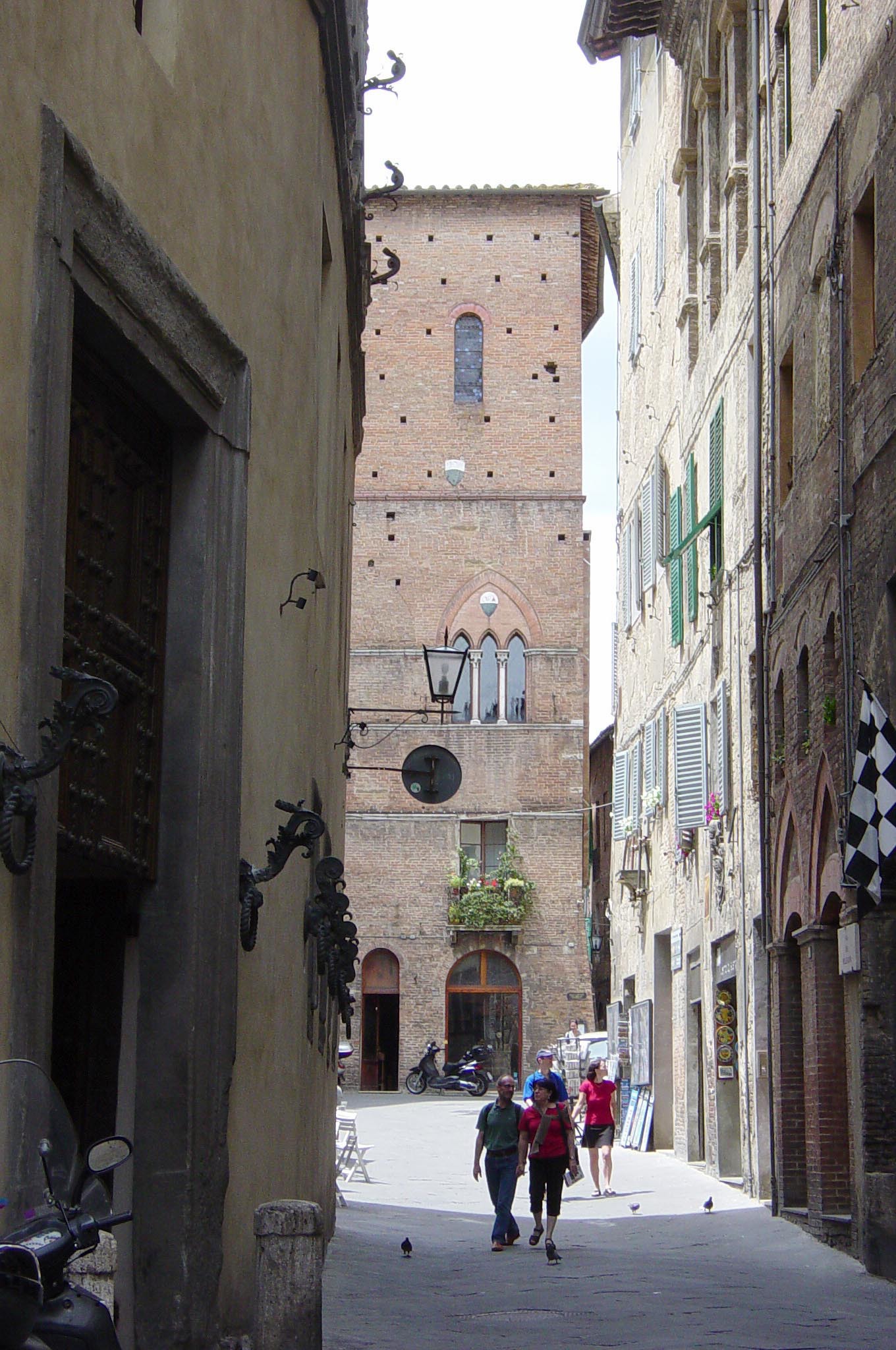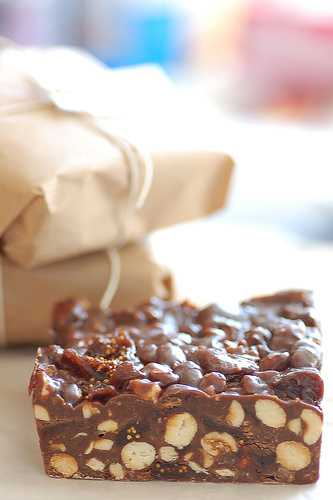Have you ever eaten something and not particularly liked it upon first bite but developed desire to eat it anyway? It’s as if there’s something about it that you know you could learn to love over time. That’s what panforte, a confection from Siena, does to me. Panforte means “strong bread.” The name comes from the blend of warm spices that go into it, like cinnamon, nutmeg, cloves, pepper, and coriander. I think its name is also appropriate because it’s so heavy and dense you could probably use it as a mild weapon if necessary.
Something along these lines: “Don’t mess with me now, I’m just back from the pastry shop and I’ve got strong bread in this bag.”
Most people compare panforte to fruitcake. I admit, there are some similarities. They’re both substantial cakes full of nuts and dried/candied fruits. They are both traditionally Christmas cakes, although panforte is now available year-round in Siena, Tuscany, and I’ve even seen some in Umbria.
The glaring difference to me, however, is that fruitcake is almost universally disgusting to me. I’ve had a single bite of one that I didn’t mind but, other than that, I loathe most of them with the fire of a thousand burning suns.
In my strong, but humble opinion, it’s the quality of the ingredients that take panforte out of the realm of fruitcake and into the realm of delicacy. How many times have you seen a fruitcake and it has those neon-green and fire-engine red, toxic-looking “cherries” peering out at you like demented eyes? And green cherries? That’s just unnatural. I do not want them in my mouth. Ever.
Panforte? Recipes differ, of course, and there are two main types. Panforte Nero has bitter almonds and cocoa which give it a deep, dark color. Panforte Margherita is lighter and a little less intensely flavored. They’re both full of good, natural stuff like warm, deep spices, honey, almonds, hazelnuts, walnuts, figs, dates, and candied fruits like lemon, orange peel, and even melon.
A thick, sticky dough is made by mixing the chopped fruits, nuts, and a bit of flour with a boiled honey and sugar mixture. It is then spread evenly over wax paper in a springform pan and baked. The final product is dusted with confectioner’s sugar and then cut into wedges. What you get in the end is rich and thick; a cake that leans toward candy territory. It’s sweet, spicy, nutty, and sometimes a little bitter.
Throughout Siena, shops lure you to their windows with stacks of these cakes, made using their special recipe, showing off the bounty of ingredients they’ve packed into a single slice. I think this is where my strange attraction to panforte comes into play. I get to Siena, I’m surrounded by remarkable medieval architecture, I’m lulled into a happy historical stupor, and, then, unique, historic desserts start winking at me through all of these windows. How can I not get a slice?
bounty of ingredients they’ve packed into a single slice. I think this is where my strange attraction to panforte comes into play. I get to Siena, I’m surrounded by remarkable medieval architecture, I’m lulled into a happy historical stupor, and, then, unique, historic desserts start winking at me through all of these windows. How can I not get a slice?
Panforte, you see, has a long historical connection to Siena. I have a great book about Italian food and its history called Culinaria Italy. It says that the first mention of panforte shows up in a document from 1205, so it has been around in one form or another for a long time.
The book recounts a legend about the creation of panforte. As the story goes, a young man named Nicoló de Salimbeni got sick of his indulgent ways and gave up all of his worldly possessions to a nun named Sister Berta. These possessions included a bag of spices, which were very dear in those days, and a recipe for a sweetmeat of apples, flour, and dried fruits called melatello. Sister Berta made the recipe but decided it was too extravagant for nuns to eat, so she passed it on to a bishop. The recipe continued to pass from person to person until it reached the hands of a famous cook named Ubaldino, who was so well-known that Dante wrote about him in the Divine Comedy. Ubaldino changed the recipe a bit and, essentially, created the first panforte. Panforte then became one of Siena’s exports and was thought to be an aphrodisiac because of the amount of exotic spices used in the recipes. It appeared in Venice around 1370. (Culinaria Italy, ed. Claudia Piras (h.f.ullmann, 2008), 245.)
 So if you’re ever in Siena, grab a slice and wander the medieval streets while pondering history and/or trying to discern any aphrodisiac effects.
So if you’re ever in Siena, grab a slice and wander the medieval streets while pondering history and/or trying to discern any aphrodisiac effects.
If you can’t make it to Siena, you can always try making panforte at home. I haven’t made one yet and there are lots of recipes strewn around the web, but these are the ones I’ve been looking at so far: Davina Cucina and Bon Appetit. When I do make one, I’ll be sure to do a post on it.
If you make or have made one in the past, feel free to leave a comment about your experience!
Oh, and although I really, really hate fruitcake, I'm always willing to give them a taste. If you have any tried, true, beloved, delicious, and neon fruit-free recipes, feel free to let me know!
















